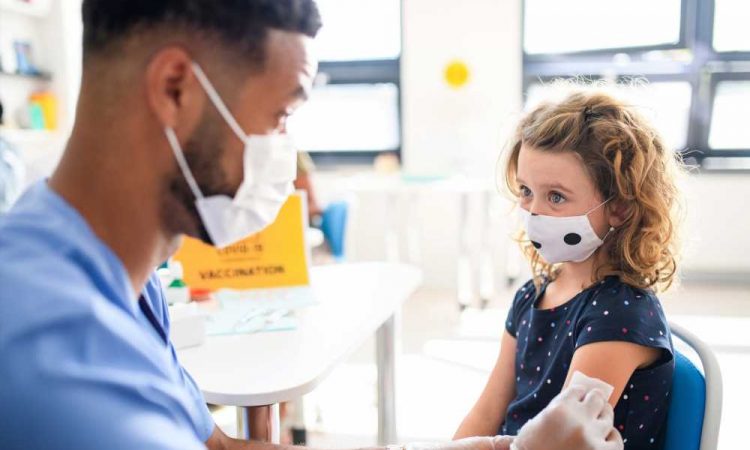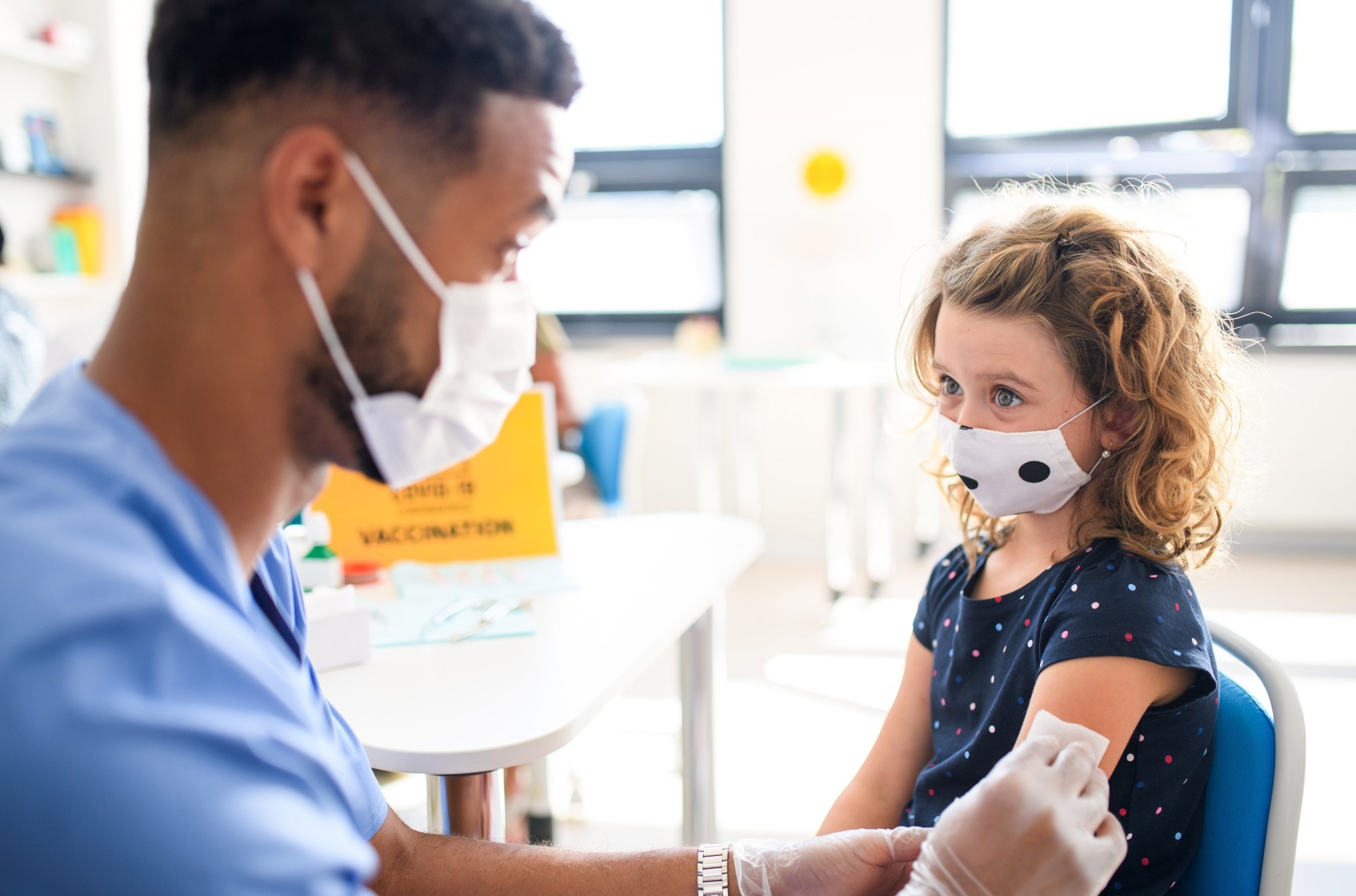Vaccine impact: BNT162b2 and pediatric COVID-19 ambulatory visits in kids under 5

In a recent article published in Jama Network Open, researchers estimated the association between receipt of BNT162b2 vaccine and coronavirus disease 2019 (COVID-19)-related ambulatory visits in United States (US) children below the age of five years.
 Study: Receipt of BNT162b2 Vaccine and COVID-19 Ambulatory Visits in US Children Younger Than 5 Years. Image Credit: Ground Picture/Shutterstock.com
Study: Receipt of BNT162b2 Vaccine and COVID-19 Ambulatory Visits in US Children Younger Than 5 Years. Image Credit: Ground Picture/Shutterstock.com
Background
In the US, messenger ribonucleic acid (mRNA) technology-based COVID-19 vaccines based on wildtype severe acute respiratory syndrome coronavirus 2 (SARS-CoV-2) strain became available for young children from June 18, 2022, onward. However, vaccine uptake was low, and <5% of US children completed a primary SARS-CoV-2 vaccination series by May 24, 2023.
A previous study that examined COVID-19 vaccination and disease outcomes among children younger than five years did not include children younger than three years.
About the study
In the present study, researchers included children aged six months to four years diagnosed with an acute respiratory infection and tested for COVID-19 using reverse transcriptase-polymerase chain reaction (RT-PCR) in the urgent care (UC), emergency department (ED), or outpatient settings of Kaiser Permanente Southern California (KPSC) between July 23, 2022 and May 19, 2023.
Additionally, they used a test-negative case-control design to compare the risk of COVID-19 outcomes requiring medical attention between vaccinated COVID-19 cases and RT-PCR test-negative controls.
The team exclusively included children who received 3μg BNT162b2 as a three-dose series. The time gap between doses two and one was three to eight weeks, and doses 3 and 2 were eight weeks minimum.
Further, the researchers computed odds ratios (ORs) and 95% confidence intervals (CIs) using logistic regression models that included variables such as date of viral encounter, age, gender, race/ethnicity, COVID-19 history, and pediatric risk score.
Results
During the study period, 24,261 children aged six months to four years met the inclusion criteria of the criteria, of which 11,615, 7,074, and 5,572 sought admission into the ED, UC, and outpatient settings of KPSC.
Overall, 2,337 children tested SARS-CoV-2-positive (cases), of which 76 (3.3%) received two or three doses of BNT162b2. Of 21,924 controls, 1,382 (6.3%) also received two or three doses of BNT162b2.
The median number of days between doses two and three was 61. Likewise, among two-dose recipients, the median number of days since dose two was 59.
Compared with unvaccinated children, the adjusted ORs for children who received a BNT162b2 vaccine (n=1457) were 0.70, 0.60, and 0.67 (95% CI) for a COVID–19–related ED/UC visit, outpatient visit, and either outcome, respectively.
Note that an adjusted OR of 0.67 equates to vaccine effectiveness (VE) of 33%, computed as one minus the OR, which is lower than ~70% efficacy against symptomatic COVID-19 observed during a clinical trial when Omicron BA.2 sublineages were predominant.
Compared to BNT162b2's three-dose recipients, two-dose recipients were at a lower risk of SARS-CoV-2 encounters during ED, UC, and outpatient visits, although with wide CIs.
By the time young children received their third dose, more immune-evasive Omicron sublineages had emerged and were circulating globally, and the median time since the third versus second dose was longer.
Nonetheless, wildtype BNT162b2 vaccination (at least two doses) reduced the risk of COVID-19 ED, UC, and outpatient visits in children below five years.
To preserve the immunity of young children against SARS-CoV-2 strains circulating in the future, updated COVID-19 vaccines will likely be needed.
Tartof, SY., (2023) Receipt of BNT162b2 Vaccine and COVID-19 Ambulatory Visits in US Children Younger Than 5 Years, JAMA. doi:10.1001/jama.2023.17473. https://jamanetwork.com/journals/jama/fullarticle/2809748#:~:text=Receiving%20at%20least%202%20doses,children%20younger%20than%205%20years.
Posted in: Child Health News | Medical Science News | Medical Research News | Disease/Infection News | Healthcare News
Tags: Children, Clinical Trial, Coronavirus, covid-19, Efficacy, immunity, Omicron, Polymerase, Polymerase Chain Reaction, Respiratory, Reverse Transcriptase, Ribonucleic Acid, SARS, SARS-CoV-2, Severe Acute Respiratory, Severe Acute Respiratory Syndrome, Syndrome, Technology, Vaccine

Written by
Neha Mathur
Neha is a digital marketing professional based in Gurugram, India. She has a Master’s degree from the University of Rajasthan with a specialization in Biotechnology in 2008. She has experience in pre-clinical research as part of her research project in The Department of Toxicology at the prestigious Central Drug Research Institute (CDRI), Lucknow, India. She also holds a certification in C++ programming.